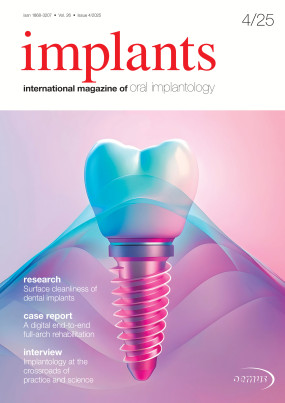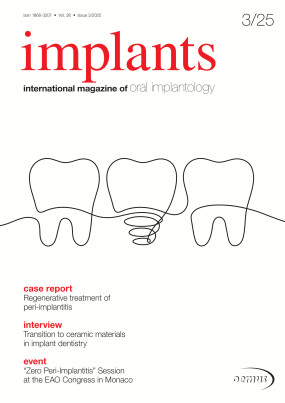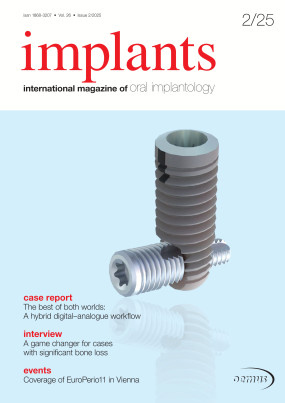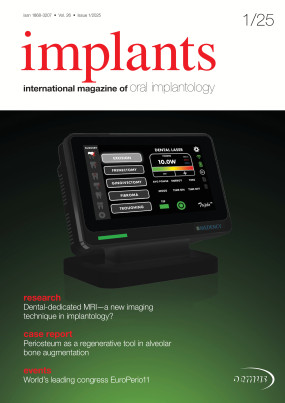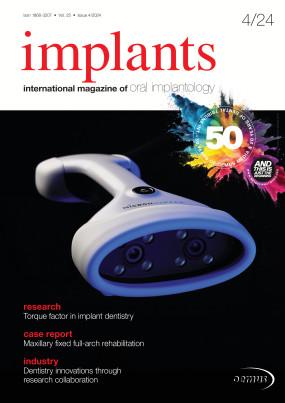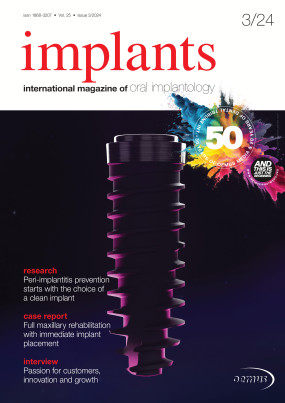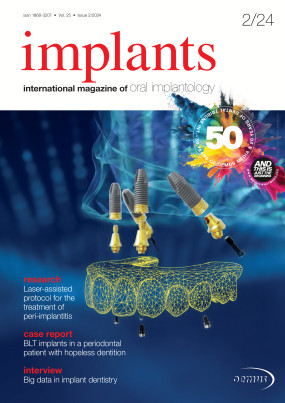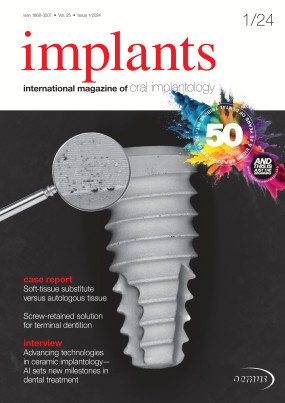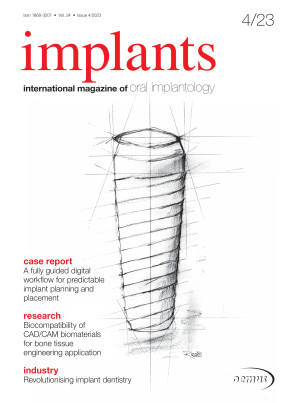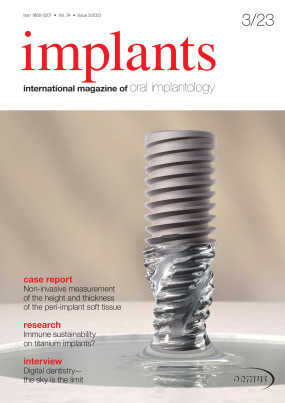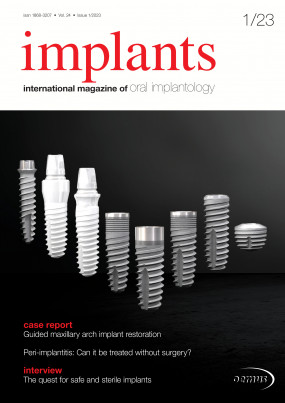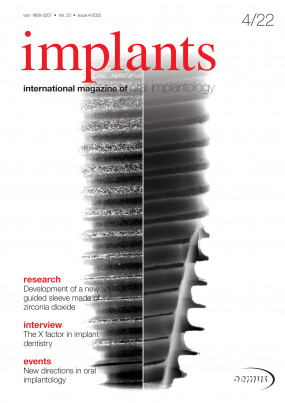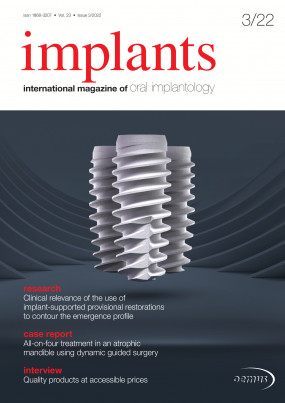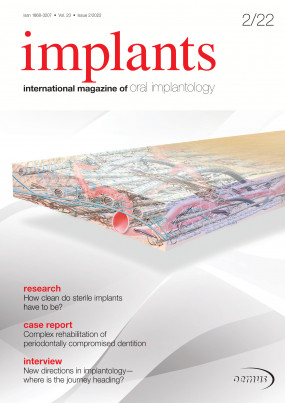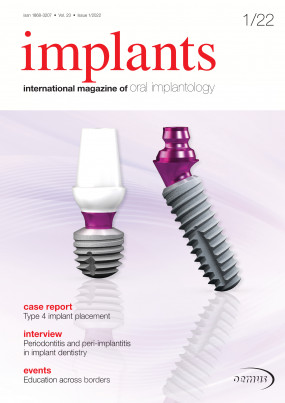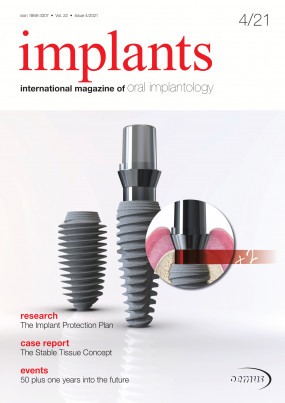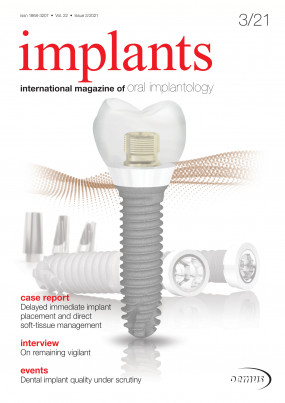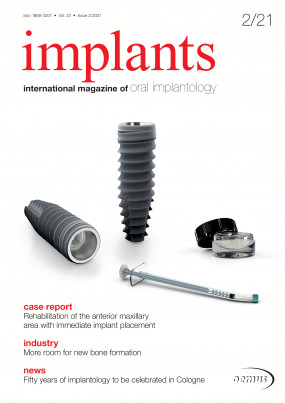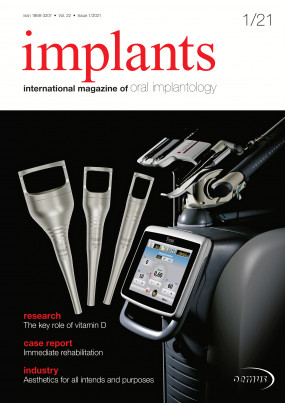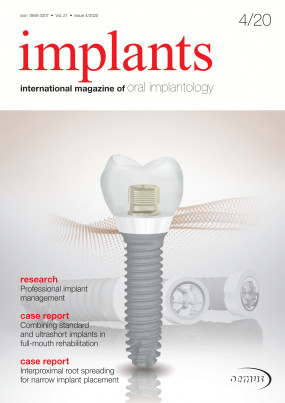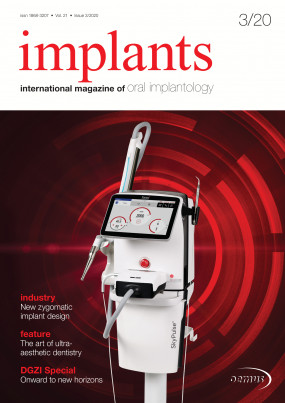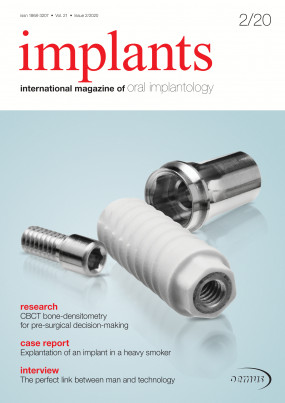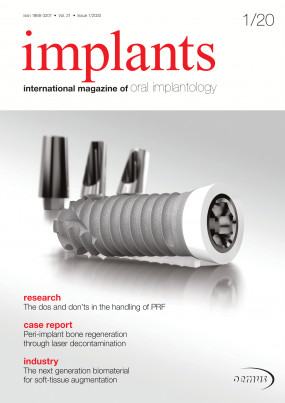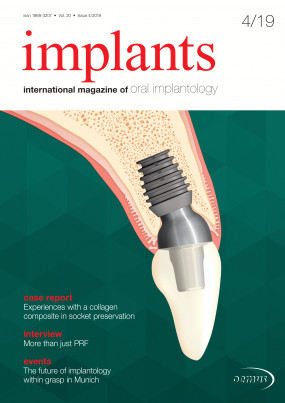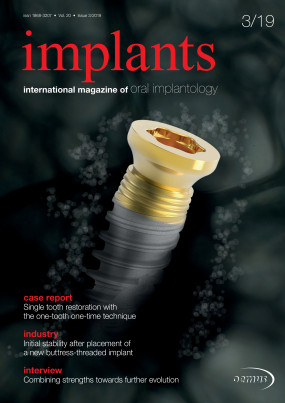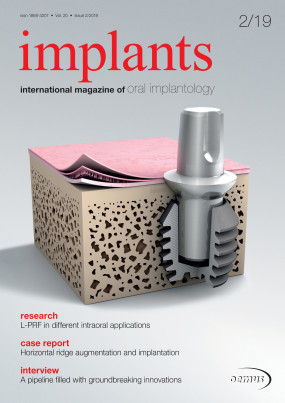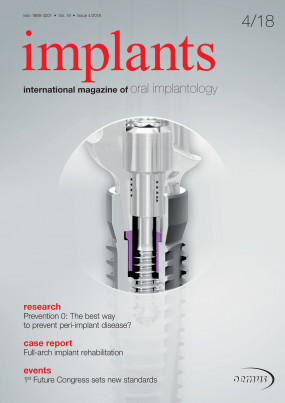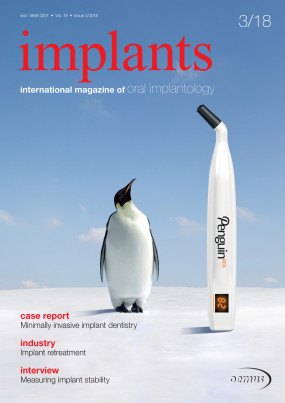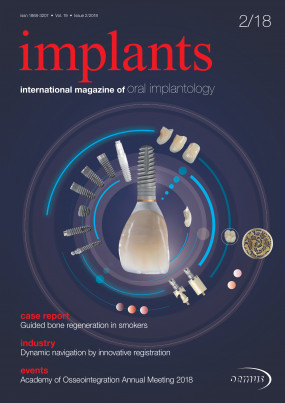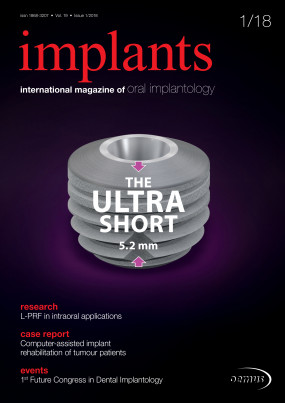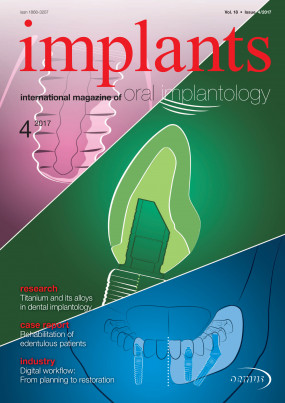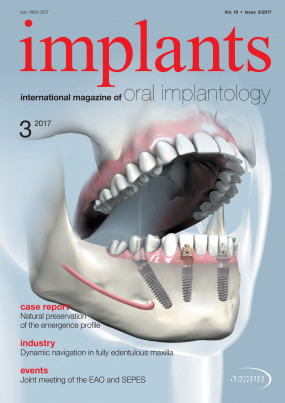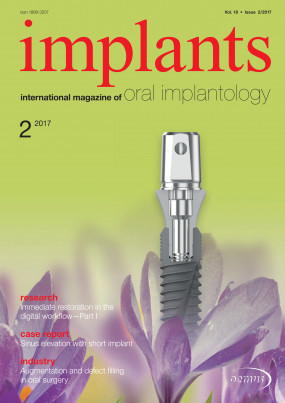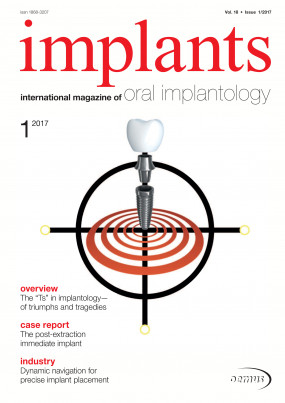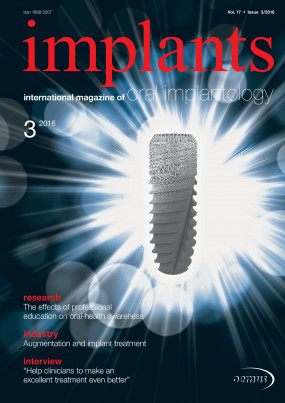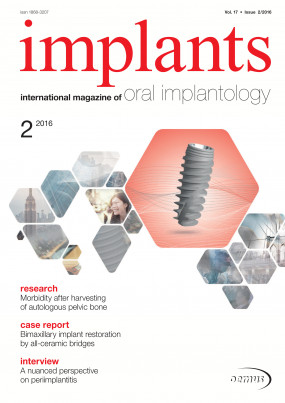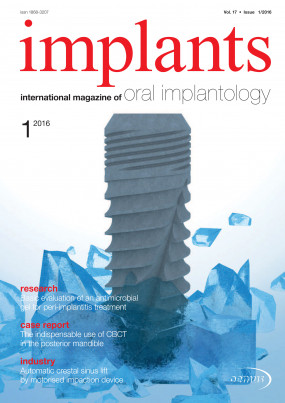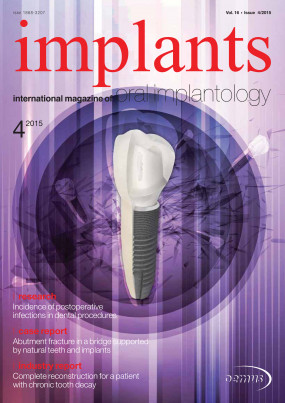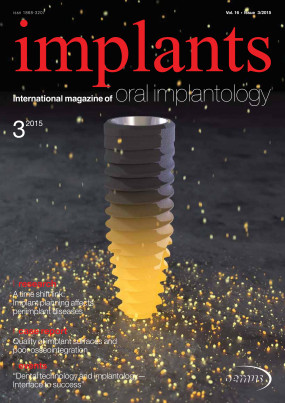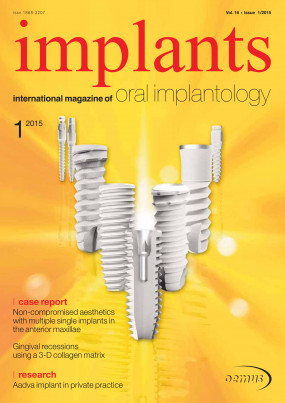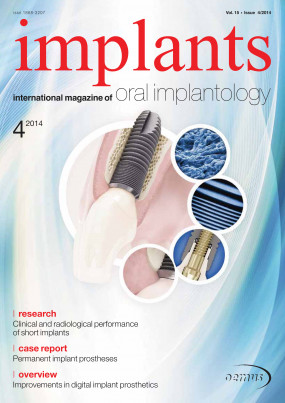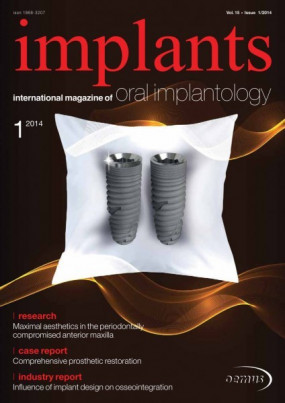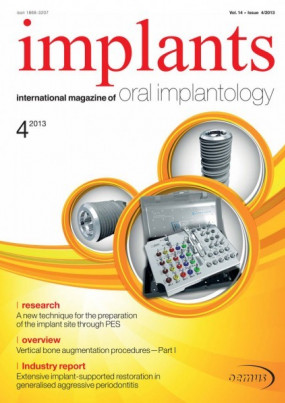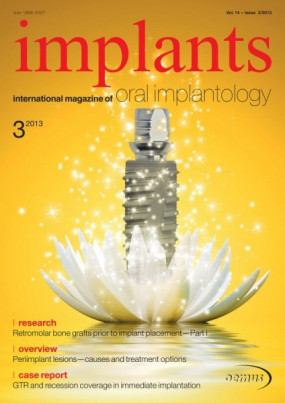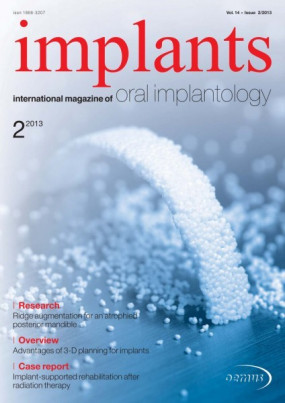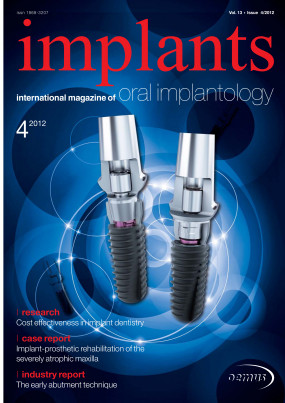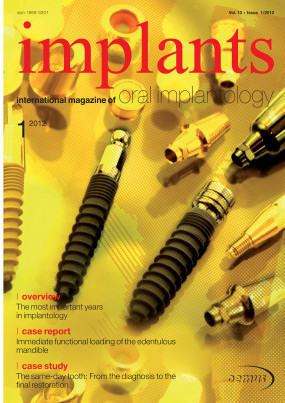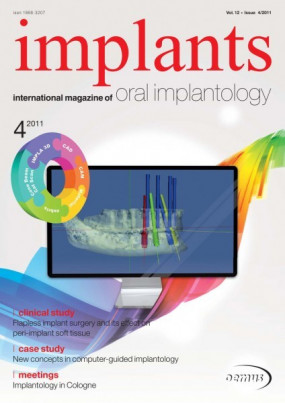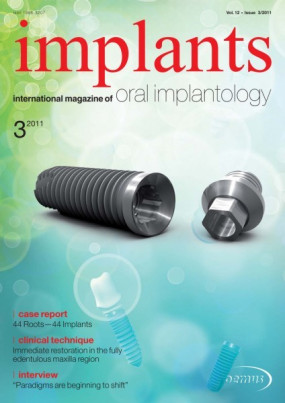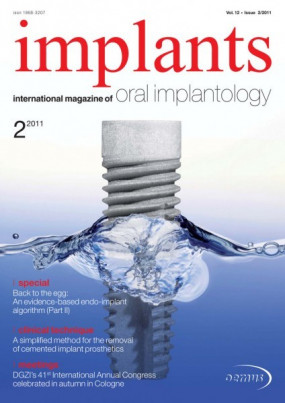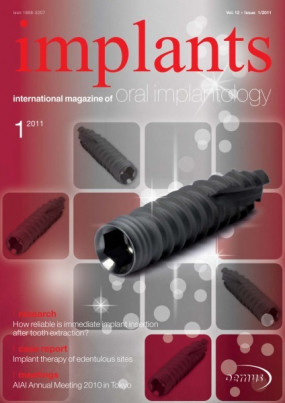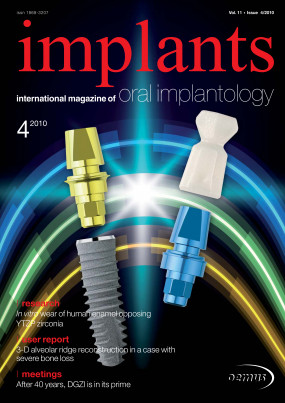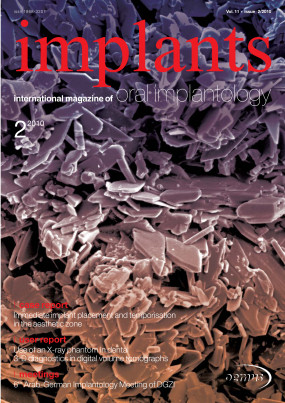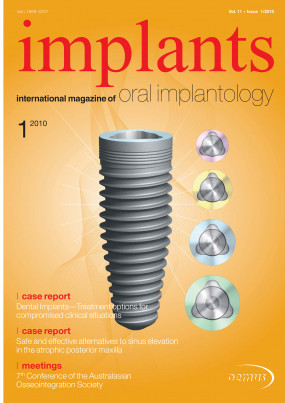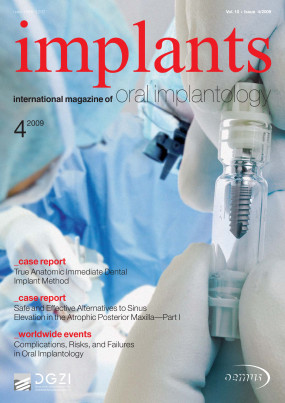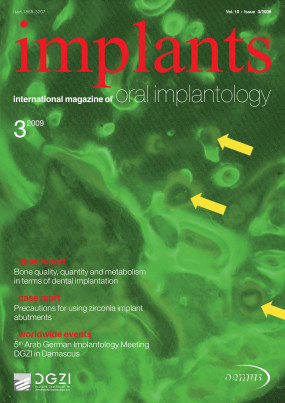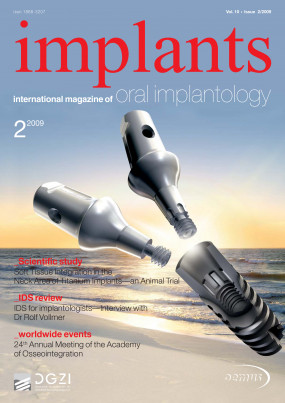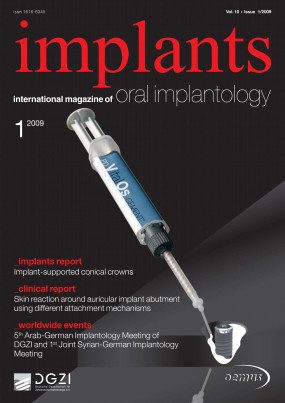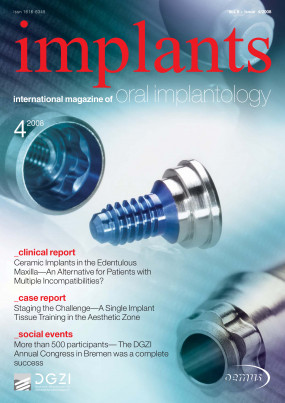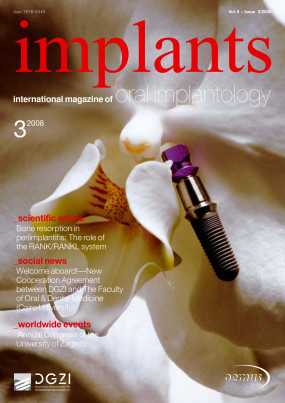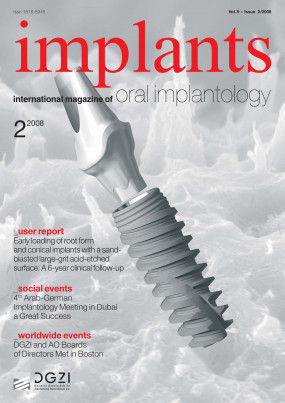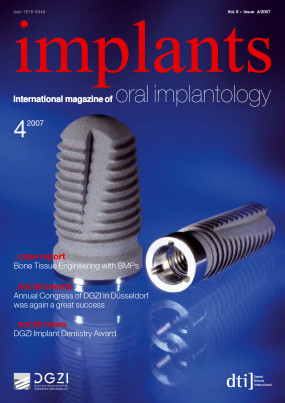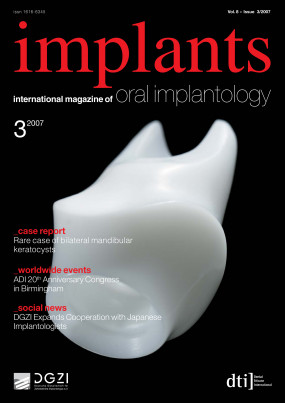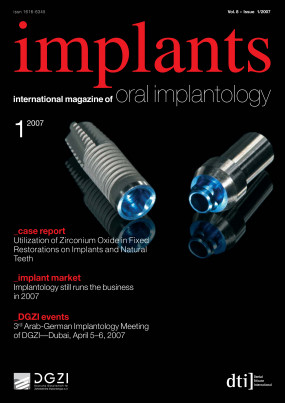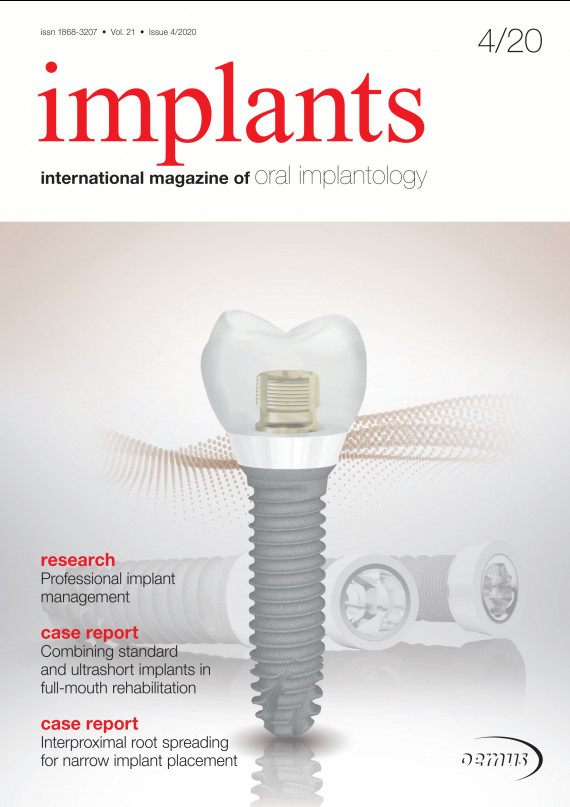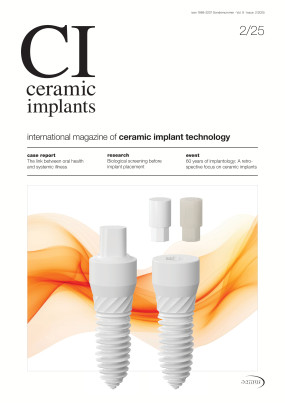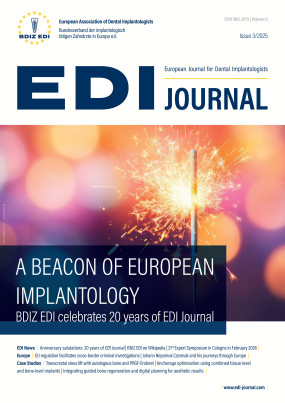Inhaltsverzeichnis
1
3
Through the 3rd Future Congress for Dental Implantol-ogy, the German Association of Dental Implantology (DGZI) planned to celebrate its 50th anniversary this year in its founding city of Bremen. The outstanding congress concept, the streaming of live surgeries, the myriad of scientific lectures delivered by renowned speakers, the table clinics with hands-on character, the digital poster presentation and the now traditional get-together would have made for a truly extraordinary scientific event for continuing professional development...
4
6
The treatment of peri-implant disease remains a great challenge for the practising dentist. In spite of current guidelines, a direct therapy recommendation for treating diseased implants is still lacking. Owing to demographic change and the wide range of indications for implants, peri-implant disease is becoming an increasingly rele-vant problem in everyday practice. Since peri-implantitis is an irreversible disease that can lead to pain, severe aesthetic impairments and implant loss, it is necessary to adequately care for implants and treat the first signs of peri-implant inflammation at an early stage...
14
Implants have become an essential part of restorative dentistry. Their success and long-term prognosis mainly depend on design, accurate manufacturing of their surface structure, bone quality, clinical skill and individual risk factors. Titanium implants have been used in dentistry with great success for more than 50 years and various sur-face modifications have been made to improve osseointegration. An ideal implant requires high levels of surface cleanliness in order to minimise the risk of foreign body reactions. Different implant systems have different surface properties, leading to different cell adhesion results...
16
The dentigerous or follicular cyst is the most common type of developmental odontogenic cyst and the second most common among all that occur in the jaws, representing about 20% of all cysts.1, 2 By definition, a dentigerous cyst is attached to the tooth cervix (cementoenamel junction) and encloses the crown of the unerupted tooth. It is a benign lesion associated with the odontogenic ep-ithelium of the crown of an unerupted tooth and origi-nates from the separation of the follicle around the crown of the tooth in question, forming a cavity bounded by the reduced enamel epithelium and the tooth enamel, which is filled with cystic fluid.3 ...
22
Combining standard and ultrashort implants in full-mouth rehabilitation
Drs Giovanni Ghirlanda, Michele Vasina & Laura C. Campos, Italy
The use of shorter implants was introduced in the early 1990s to overcome the necessity of complex and expen-sive bone augmentation procedures associated with implant therapies. In recent years, different proposals have been made regarding the length that would classify im-plants as short in comparison with standard implants. Now, there is consensus that implants with a length of ≥ 8 mm are considered as standard, 6–8 mm long implants are classified as short and implants with a length of < 6 mm are defined as ultrashort...
28
Interproximal root spreading for narrow implant placement
Dr Mauro Marincola, Dr Laura Murcko, Dr Giorgio Lombardo & Prof. Rolf Ewers, Italy, Austria & USA
Congenitally missing lateral incisors are quite common. In some communities, we observe an incidence of up to 3 % in the young population. Today, these teeth can be successfully replaced with dental implants.1 Very often, these patients must undergo orthodontic treatment to obtain the adequate mesiodistal and buccooral dimensions. In many of these cases, the distances between the two neighbouring teeth remain critical because the orthodontist has moved the coronal part, but the roots still remain critically close to one another.2 ...
32
In September 2019, a 53-year-old non-smoking male patient came for a consultation after the fracture of his maxillary right first premolar (Fig. 1). The patient presented with minimal periodontal problems, including multiple gingival recessions. The radiographic image confirmed the pres-ence of a large periapical radiolucent area and some distal interproximal bone loss (Fig. 2). A thorough examination was carried out and revealed caries into the root and in-volvement of the distal furcation (Fig. 3). Upon clinical examination, the amount of healthy dentine was considered insufficient for a stump preparation for a conventional crown. Moreover, the patient was unwilling to undergo orthodontic extrusion of the tooth...
34
We all have been experiencing an extremely difficult period in the past few months. In the following, I would like to show you how you can utilise your social media channels more wisely and provide you with 5 important tips which will make the communication between you and your patients on social media during the current pe-riod even more effective. You will learn what to say and how to say it and attract new patients as a result—after all, we are not only dentists but also entrepreneurs with businesses to run...
